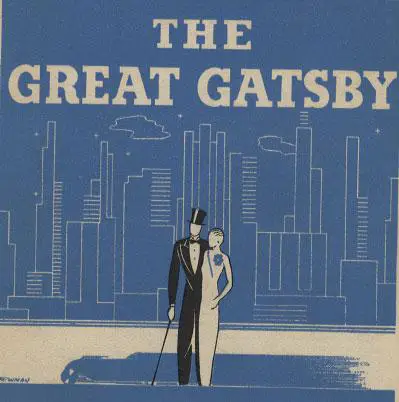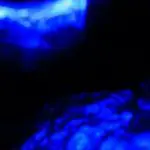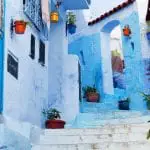A novel written by the American author, F. Scott Fitzgerald, is The Great Gatsby. It came out in 1925 in an era that was just getting used to prohibition and the age of jazz. The novel’s characters live in two fictional towns, West Egg and East Egg, on Long Island. At the time, Long Island is a metaphor for wealth and prosperity. The novel is set in the summer of 1922. The book, by several critics and readers alike, is thought of as one of the landmarks of English literary prowess. Blue symbolism is used as a statement in the novel significantly.
The story revolves around young Jay Gatsby, a millionaire, decadent and obsessed by his former lover, Daisy Buchanan. He has lofty ideals and unrealistic plans to reunite with Daisy, imagining that their love has stood the test of time. The themes of social upheaval, materialism, resistance to change and opulence are explored. Fitzgerald managed to create a novel which is a portrayal of the Roaring 20s in all its extravagant glory. Critics have regarded it as a cautionary sign for those who believe in the book as a meaning of the “American Dream”.
Inspiration
This was Fitzgerald’s magnum opus, but it was met with a poor reception at first. His own editor called the novel, “vague”. Fitzgerald desired to produce a work that was new, but still part of the human experience. He wanted to create a “different“ kind of novel, one in which wealth was manifested as negative. This marks the distinctive quality of the book. The author had experienced the party scene himself, and that’s how he got the idea for the story.
During the period of the Second World War, the book’s interest saw a revival. It became part of the American school curriculum for high school students of literature. A play was staged after that. A film was made too, and a newer version recently. In the film, you notice the blue symbolism more than ever.
Hedonism
Society in the 1929s and the norms it adhered to, or not, are critically touched upon in the novel. It was a period of laws of prohibition living with libertine ideals. This contrast in views is shown expressively in the book. Simple features of the period occur in the book. For instance, petting in cars is mentioned, and the author’s allusions to bootlegging as the reason for Gatsby’s riches. In this way, Fitzgerald is giving readers an education about the age in the history of America.
In many ways, it’s also a tell-all account of Fitzgerald‘s life. He also had an Ivy League education, like the narrator of the story. The author was also in love with a socialite whom he couldn’t marry due to his “poor background”. He then joined the US armed forces and fell in love with another woman. Her parents took objection to their engagement as he lacked financial backing. Like Gatsby, he had to attain wealth and fame to marry the woman he loved. The first symbolic aspect of color in the book is in the cover. Blue symbolism on the cover is a taste of what is to come when the reader turns the pages.
Blue Cover
The first edition of The Great Gatsby shows the cover design as a woman’s disembodied face on a dark indigo background. It is one of the most talked about art in the history of American literary work. The huge mass of blue that we see, upon closer examination, is the blue skyline of New York, as you can see the lit-up skyscrapers against it. In the “eyes” of the woman’s face, there are profiles of women in the nude.
The blue cover is reflective of the life of Jay Gatsby. Blue symbolism is representative of life itself, of our planet and all that is there in nature. Blue here, is also a message of tragedy, something sad and melancholy about the story itself. The story ends with the death of Gatsby. The fact that all his riches couldn’t bring happiness without the woman of his dreams, is a recurring idea in the book. There are, of course, many more references to the color blue in the book.
Analysis of Blue
The color blue is a symbol of purity, loss and more importantly, in the book, the imagination. This is depicted by the author as the contradiction between reality and fantasy in the mind of Jay Gatsby. Blue, in the novel, occurs in the setting, as well as in the narration by characters. You could say that blue symbolism is innate to the characters themselves.
If you analyze the way the color blue has been used in the novel, you may attain a deeper meaning. Seen through the blue eyes (in yellow-rimmed spectacles) of the Doctor on the poster, T.J. Eckelburg, blue is symbolic of heaven (Sky) and purity. In the book, Nick notices that the “eyes of Dr. T. J. Eckelburg are blue and Gigantic …” Fitzgerald’s imagery of this character on a poster, wants to convey to readers that these eyes “see” all that the characters do. Yet, the doctor is not judgmental. He just stares in a passive manner. The blue eyes are a portal into the doctor’s soul. The blue symbolism here may be attributed to the eyes of a higher force, such as God, looking over everything.
The Water Variable
Daisy, Gatsby’s unattainable love interest, is detached from him by a water body. She lives in another city across the water. Water is a blue element. Here, it is symbolic of Gatsby being so close to her, yet so far. It’s not just physical distance that is the water’s blue symbolism here. Spiritually, Gatsby is at a distance too. He is desperately sad and lonely.
At the end of the novel, the morbid melancholia is all but clear as Gatsby realizes the pessimistic reality of his situation. Fitzgerald writes, “a blue quickening by the window…About five o’clock it was blue enough outside to snap off a light”. This is indicative of the mood of sorrow that runs like a thread through the whole book. It culminates in Gatsby’s death.
The Blue Lawn
A very prominent event that the author wants the reader to visualize is the party scene of the 1920s. In the book, Gatsby’s parties are supposed to be the stuff of legends. He has them to fill a void in his life, and to show off his wealth. Fitzgerald writes, “In [Gatsby’s] gardens men and women came and went like moths…” The blue lawn (gardens) of Jay Gatsby is always filled to the brim with people. These are almost always strangers who themselves want to identify with someone as rich as Gatsby. Blue is representative of richness here, as in wealth – people who come from extreme wealth are indicative of being blue-blooded. The term might be authentically used for “royalty”, but to a lot of people, Gatsby would be considered as such because of his millions.
The blue symbolism here is also in terms of the lawn being so well maintained, like Kentucky bluegrass (indicating wealth again). It is noteworthy that Daisy also originally hails from Kentucky. The blue lawn is significant of the achievement of Gatsby in terms of “striking gold”. He has come such a long way to get where he is. Nonetheless, it’s an irony as he isn’t happy in the true sense of the word. Blue denotes perfection in this sense, but not in the way Gatsby has envisioned it. He had thought that by gaining riches, he would be worthy of Daisy’s affection.
Blue in The Great Gatsby
The color blue is linked with hopes, thoughts and actual physical elements in the novel, The Great Gatsby. For instance, Gatsby’s chauffeur is “in a uniform of robin’s-egg-blue.” Blue is also important because a friend of Gatsby’s gave him “a blue coat” for yachting. This clearly demonstrates Gatsby’s hope of belonging to the jet-set upper class in society. Blue symbolism is ever present after Myrtle’s death. Fitzgerald’s imagery states that “the shadow of a tree fell abruptly across the dew and ghostly birds began to sing among the blue leaves”.
Blue foliage wraps the death of three characters in the novel. It is prevalent in the narrative after the deaths of Gatsby, Myrtle and Wilson. Again, it is connotative of failure and frustration. These were the feelings that Gatsby had when he was alive. He felt he failed to protect his loved ones. He couldn’t manage to save Daisy from her volatile relationship with Tom. Gatsby could not stop Myrtle from seeing Tom and helping George Wilson in the bargain. Blue as evocative of the extreme sadness, not only in Gatsby’s life, but in everyone he touched, is relevant in the book.
Interestingly, the eyes of T. J. Eckelburg, on the billboard poster of blue, are looking down upon the “valley of ashes,” a dumping ground. Representative of God looking down upon the world and regarding it as a materialistic wasteland, it is also blue symbolism that denotes Gatsby’s life. It is a virtual wasteland that he is clinging onto with the slim hope of winning over Daisy. Holding on to this, by straws, he fantasizes a future that is unrealistic. In the end, he realizes his delusion.



